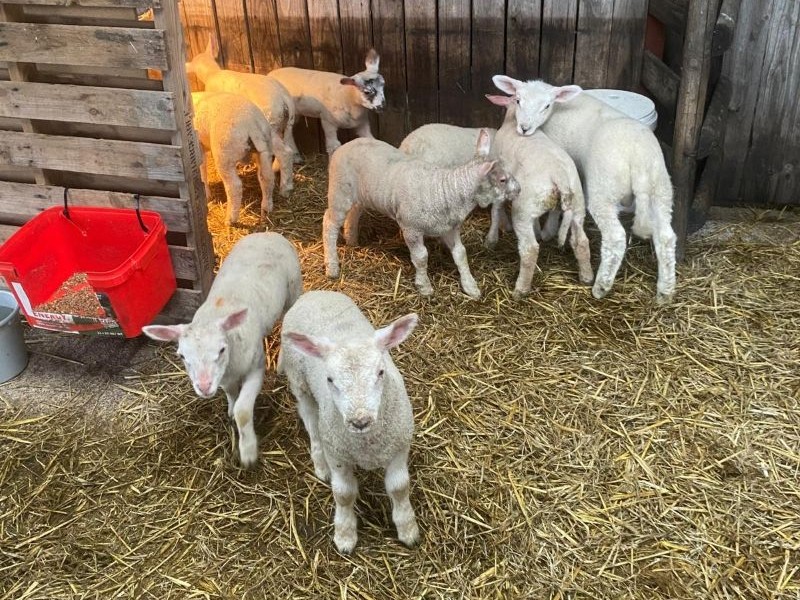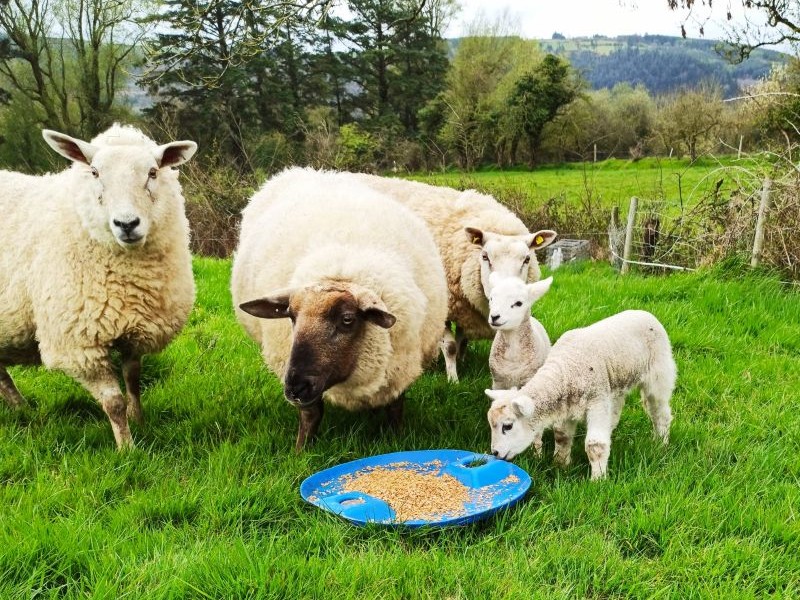Higher growth rates on Ewe-reka cuts weaning age by two weeks
Rearing triplet and orphan lambs on a milk replacer made from ewes’ milk has helped a South Warwickshire flock cut weaning age by two weeks while improving health and growth rates.
Walters’ flock system
Richard, Andrew and John Walters run a flock of 600 North Country x Suffolk ewes, which they lamb from the end of February. Their flock achieves an average scanning rate ranging from 210% to 225%, with the lambs sold rate at 188% in 2022.
Replacements are bought in from sales and isolated from the main flock until scanning, to prevent disease spread. Lambing takes place indoors, with triplets wet-adopted onto singles. Every lamb is given powdered colostrum at birth to ensure a strong start.
Ewe-reka improves lamb rearing
Since switching to Ewe-reka milk replacer to rear their orphan and triplet lambs more than four years ago, the Walters have seen:
- Higher growth rates
- Weaning age reduced by two weeks (down to 5 – 6 weeks, when lambs are approximately 14 – 16kg)
- Fewer health issues and significantly lower morbidity
- Elimination of bloat problems previously seen with other feeds
On average, the family rears around 80 cade lambs per year using this system. They first made the change to Ewe-reka milk replacer as they were keen to feed a product that contained ewes’ milk.
Lamb nursery and feeding
The lamb nursery features two pens, holding up to 50 lambs each:
- Smaller pen for younger lambs
- Larger pen for older lambs
Pens are designed with horseshoe-shaped corners to reduce bullying and trampling within the groups. Each pen has four feeding stations and small bales are provided for climbing and warmth.
Feeding is managed with a Heatwave ad-lib system using Ewe-reka milk replacer. Milk powder is precisely weighed on scales and mixed at a concentration of 20% dry matter (200g powder to 1L cold water). This is mixed using a Wydale mixer feeder attached to the Heatwave. The Heatwave heats milk as lambs suckle, ensuring a constant warm supply.
Ad-lib fresh water, changed daily, and an 18% protein creep feed with added Deccox are provided. All lambs are checked twice a day to ensure they have suckled from the feeder.
The machine is checked at least twice daily, to ensure there is a constant milk supply. This regularity prevents gorging and teat chewing. Hygiene is a top priority:
- The feeding system is cleaned and disinfected daily
- Two sets of teats and milk lines are swapped daily and soaked in disinfectant for 24 hours
Weaning process
Lambs are weaned abruptly at 35 – 42 days, guided by:
- Birth dates marked on their coats
- Solid feed intake (lambs are only weaned when they are eating 200g of 18% protein creep for three consecutive days)
After weaning, lambs are turned out to pasture for a cleaner environment. Creep is still provided but after a few weeks a reduced protein feed is introduced, to make lambs “grow up and out’, says Richard.
Market performance
They sell all their lambs fat to Farmers Fresh from the end of May, when they are 12 weeks old, at an average deadweight of 19.5 – 20kg.


